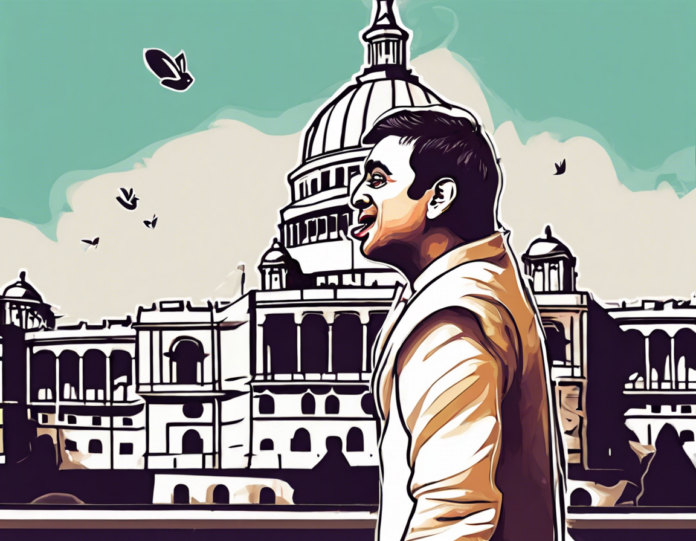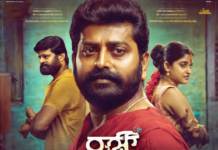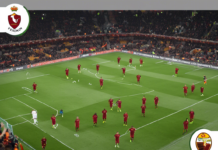In the realm of Indian politics, where every action and gesture can be magnified and scrutinized, a recent incident involving the Congress leader Rahul Gandhi has stirred up controversy and garnered mixed reactions from the public and political circles alike. During a session in the Parliament, Rahul Gandhi was seen blowing a flying kiss towards the treasury benches, a move that has sparked a debate on whether it was a genuine political gesture or a calculated publicity stunt.
The Act of the Flying Kiss:
The act of blowing a flying kiss is often associated with affection, adoration, and goodwill in a social or personal context. However, in the political arena, where every move is carefully observed and interpreted, such gestures can take on a different meaning altogether. Rahul Gandhi’s flying kiss in Parliament was met with varied responses, with some viewing it as a lighthearted attempt to lighten the mood, while others criticized it as a trivialization of serious political issues.
Political Symbolism vs. Public Perception:
Politicians often use symbolism and gestures to convey messages, connect with the public, or make a statement. In the case of Rahul Gandhi’s flying kiss, it can be seen as an attempt to disrupt the tense atmosphere in Parliament or as a way to project a more approachable and affable image. However, the perception of such actions plays a crucial role in how they are received by the public and the media.
Psychological Analysis of Behavior:
From a psychological perspective, gestures like blowing a flying kiss can be seen as a form of non-verbal communication that expresses emotions, intentions, or attitudes. In the context of politics, such gestures can be decoded through the lens of body language and behavioral psychology to understand the underlying motives or meanings behind them.
Publicity Stunt or Genuine Gesture:
The thin line between a publicity stunt and a genuine gesture in politics is often blurred, with critics quick to label any unconventional or attention-grabbing action as a calculated move for media attention. In the case of Rahul Gandhi’s flying kiss, the debate rages on whether it was a spontaneous display of emotion or a strategic ploy to garner publicity and create buzz.
Impact on Political Image:
Every action of a public figure, especially a prominent politician like Rahul Gandhi, has the potential to shape their political image and public perception. While some may see the flying kiss incident as a relatable and humanizing moment, others may view it as a frivolous act unbecoming of a serious political leader.
Conclusion:
In the dynamic and often theatrical world of Indian politics, gestures and actions like the flying kiss by Rahul Gandhi can spark discussions, debates, and controversies. Whether it was a genuine expression of goodwill or a calculated publicity stunt, the incident serves as a reminder of the interplay between politics, perception, and performance in shaping public discourse and political narratives.
Frequently Asked Questions (FAQs):
1. Was Rahul Gandhi’s flying kiss a premeditated move?
While the intentions behind Rahul Gandhi’s flying kiss remain subjective, there is no concrete evidence to suggest that it was a premeditated or planned gesture.
2. How did the media react to the flying kiss incident?
The media’s reaction to Rahul Gandhi’s flying kiss varied, with some outlets highlighting it as a light-hearted moment, while others criticized it as a distraction from serious parliamentary proceedings.
3. Does non-verbal communication play a significant role in politics?
Non-verbal communication, including gestures and body language, can play a crucial role in politics by conveying emotions, building connections, and shaping public perception.
4. Are gestures like the flying kiss common in Indian politics?
While unconventional gestures are not unheard of in Indian politics, the context and timing of such actions can influence how they are interpreted by the public and the media.
5. How can politicians balance authenticity with strategic communication tactics?
Politicians often walk a fine line between authenticity and strategic communication, where genuine gestures can be effective in humanizing their image, while calculated moves risk appearing insincere.
6. What impact does social media have on the amplification of political gestures?
In the age of social media, political gestures are amplified and dissected at a rapid pace, leading to quick judgments and amplification of controversies surrounding such actions.
7. Can gestures like the flying kiss detract from serious political discourse?
While light-hearted gestures have the potential to break tension and connect with the public, they can also be viewed as distractions from substantive political debates and issues.
8. How can public figures use gestures effectively in their communication strategy?
Public figures can use gestures effectively by aligning them with their messaging, being mindful of the context, and considering the diverse interpretations that such actions may evoke.
9. What role does body language analysis play in decoding political gestures?
Body language analysis can offer insights into the subconscious cues and intentions behind political gestures, providing a deeper understanding of the motives and dynamics at play.
10. How should politicians navigate the fine line between authenticity and performative behavior in their public interactions?
Politicians must strike a balance between authenticity and performative behavior by staying true to their values and beliefs while also recognizing the strategic importance of communication and gestures in engaging with the public.








